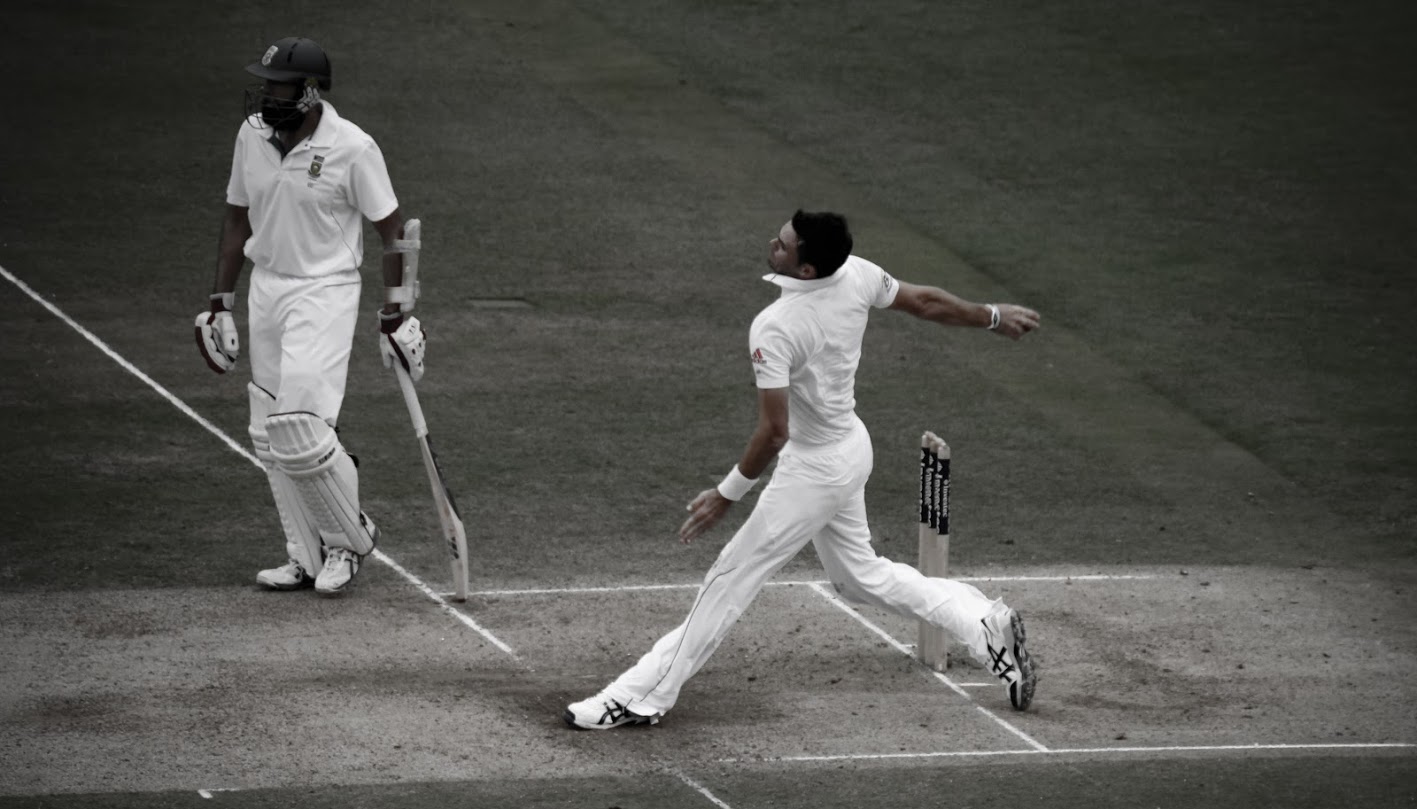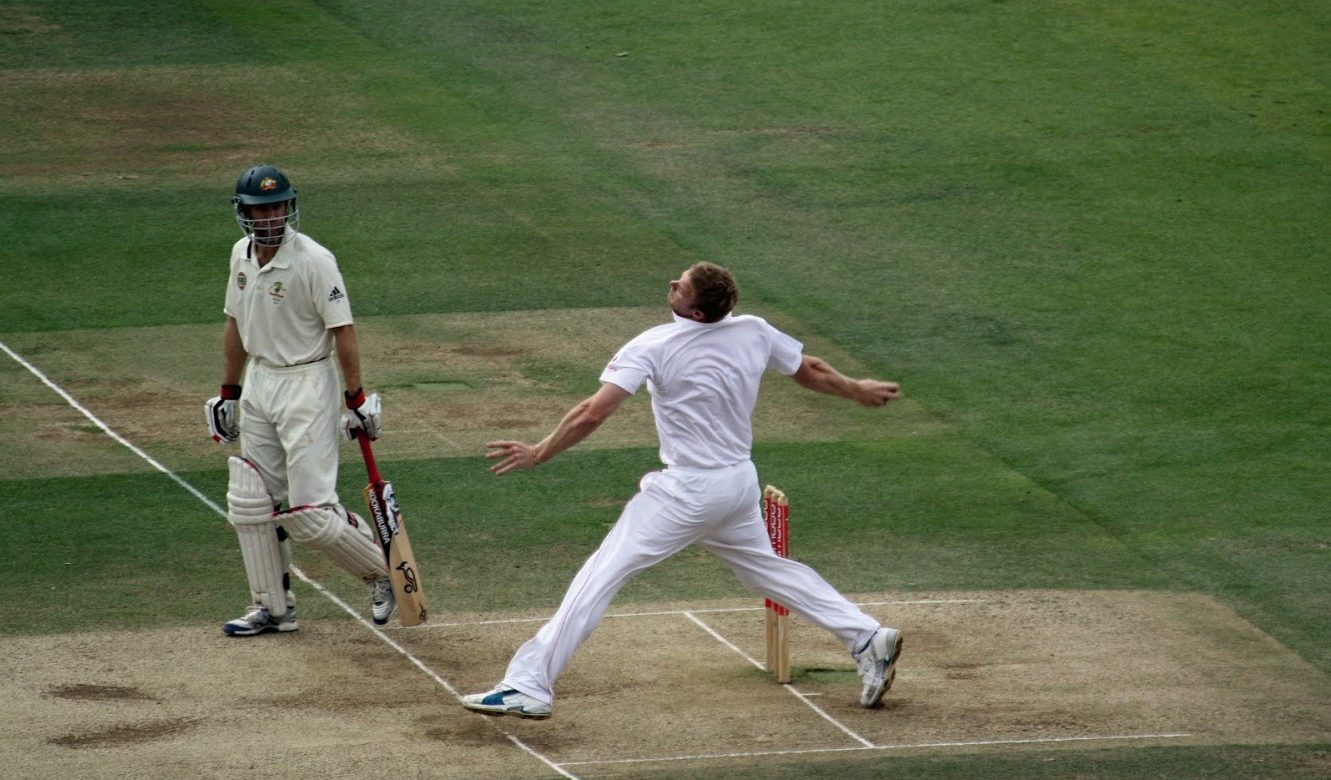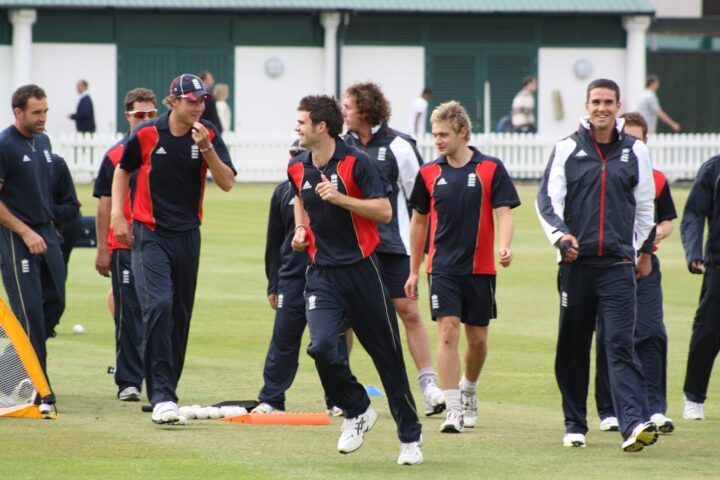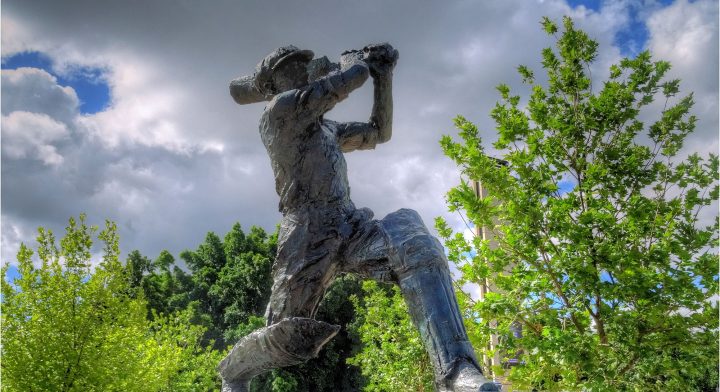As we’ve already previewed the upcoming 2018 series, and done the Adil Rashid thing to death, I thought we’d warm up for the test match with a trip down memory lane. Here’s friend of the site Haroon Khalid with his memories of the famous 1990 summer. Does the number 333 ring any bells?
The summer of 1990 was in some ways similar to 2018. England were vanquished in the semi-final of the World Cup. The weather was particularly warm. A Conservative Prime Minister was battling her own party over the vexed question of Europe. And India were joint tourists for the second leg of the international programme.
The previous summer, England had endured a disastrous Ashes campaign losing 4-0. Were it not for the weather, England may well have been whitewashed 6-0. Selection was chaotic and England made use of 29 players. Perhaps disillusioned by the capriciousness of the selectors, more than half a dozen of the 29 opted to spend the winter of 1989/90 on a rebel tour to South Africa (although in Mike Gatting’s case there was invariably more to it than that). Established names including Gatting, John Emburey, Neil Foster, Graham Dilley, Chris Broad and Tim Robinson had all opted to visit the Republic and therefore relinquish their immediate England futures.
The official team touring the West Indies therefore had a somewhat different feel to it, particularly as David Gower and Ian Botham were left out (although the former did earn a recall against India). There was a new captain in charge, Graham Gooch. The tour was particularly notable for England springing a surprise. Although the rubber was lost 2-1, Gooch’s side thrashed the West Indies in the first test in Jamaica. And in Trinidad, were it not for rain, a woefully slow over rate and injury to the captain, England would have at least drawn the series.
Working with coach Mickey Stewart, Gooch focussed on dedicated preparation and hard work. Professionalism was very much the order of the day, and this was exhibited by none more than the captain himself. And so it was that England took this approach with them into the home international season.
By way of context, it should also be noted that 1990 was hot and dry. The pitches were flat and the runs flowed. And flowed. And flowed. Wisden noted that 25,000 more championship runs had been scored in 1990 than 1989. For example, in the championship game at the Oval, Surrey scored 707-9d (Greig 291) against Lancashire. The visitors avoided the follow on target of 557 with only three wickets down before going on to score 863 (Fairbrother 366). Batsmen were going to rule the roost and so it proved in the international summer.
Four years earlier, India recorded their first test series victory in England 2-0. The squad led by Mohammad Azharuddin included the established Ravi Shastri, Dilip Vengsarkar, wicketkeeper Kiran More and of course the great Kapil Dev. India were however missing their hitherto finest batsman, Sunil Gavaskar who had retired in 1987. The team did however include a precocious seventeen year old who’d made his debut against Pakistan the previous winter. His name? SR Tendulkar.
Coming into the series, India were in decent enough form after 2 wins, 2 draws and a solitary loss in their warm up games against the counties before the first test at Lord’s. Moreover they took the One Day Internationals 2-0.
For their part, England had won the first series of the international programme against New Zealand 1-0. Eddie Hemmings, who was recalled the previous summer at the age of 40, was the spin option and England handed a debut to Derbyshire’s John Morris (one of the Tiger Moth two). After missing out against New Zealand, England also recalled David Gower (the other Tiger Moth enthusiast). In fact, the win over New Zealand represented the first series win by England since 1986/7.
And so to NW8 for the first test. Azharuddin won the toss at Lord’s and asked England to bat. Although Atherton was dismissed by Kapil Dev with the score on 14, conditions for batting (as they’d been all summer) were ideal. The recalled Gower joined Gooch to put on 127 for the second wicket with the former contributing only 40. England put the Indian attack to the sword with Gooch in imperious form. He punished anything that was even marginal. He would drive with impunity and some of his strokeplay against Shastri was magisterial. If there was ever an occasion when the phrase “seeing it like a football” was apt, this was probably it. By the end of day one, England closed on 359-2, most of them made by Gooch who finished on 194 not out. Allan Lamb also helped himself to a century.
The overnight pair added a further 90 on the second day before Lamb was dismissed by the brisk medium pace of Sanjeev Sharma. Where Lamb left off, Robin Smith continued. His innings was generously punctuated with powerful cuts and savage pulls. All the while Gooch made his way to the 300 mark which finally came after tea with a gentle nudge behind square leg off Shastri.
Gooch now only needed 66 more to attain the then highest individual test score beating Garry Sobers’ record of 365 made 32 years previously. But, all good things must come to an end, and the England captain was eventually bowled by Prabhakar for 333. Gooch finally declared as soon as Smith reached three figures on 653-4. India, in pursuit of the immediate target of 454 to avoid the follow on started steadily and closed on 48-0.
During the third morning and afternoon, India continued to make progress with Shastri completing an accomplished century. Vengsarkar looked set and made 52 before being dismissed by Fraser. Had he gone on to make three figures, it would have been his fourth at HQ (following his efforts in 1979, 1982 and 1986). However, the Saturday afternoon crowd was treated to an Azharuddin masterclass. It was one of the finest hundreds seen at Lord’s. It wasn’t particularly bludgeoning but was liberally peppered with wristy and elegant drives, pulls and flicks. His hundred came off only 87 deliveries in a little over two hours and contained 20 boundaries. India finished the Saturday 376-6 with Azharuddin and Kapil Dev the not out batsmen.
After the rest day on Sunday (whatever happened to those), Azharuddin was dismissed early on Monday for 121 after which England steadily chipped away at the Indian order. When the ninth wicket fell at 430, India were still 24 short of avoiding the follow on.
Knowing that number eleven Hirwani was unlikely to last long, Kapil cautiously played the first two balls of Hemmings’ twentieth over. At this point it was almost as if Kapil said, “Sod it!”. He then proceeded to bludgeon the spinner for three massive blows and one ‘tracer bullet’. All four shots went for six, and India scored the 24 they needed. Needless to say, Hirwani was dismissed in Angus Fraser’s next over for nought. Job done, with Fraser finishing with five wickets.
To force the win, England needed runs quickly. Gooch and Atherton set off like the proverbial train putting on 204 in quick time. Gooch emulated his opposite number by making a hundred at a strike rate of more than 100. He finished on 123 before being dismissed by Sharma. In doing so, Gooch finished the match with a match aggregate of 456 – a record that still stands today. England declared the innings on 272-4 scored at a rate of five per over. Notable during the innings was a contribution in the field by Tendulkar who took a superlative catch to dismiss Lamb. By the close, India finished on 57-2 requiring a notional 472 to win.
India needed to summon up all their batting resolve to save the game. Despite getting several starts, no-one scored more than 35 before Sharma’s rapid 38. Facing his 26th ball, he attempted a quick single to the England captain who promptly (and appropriately) threw down the stumps giving England victory on the fifth afternoon by 247 runs.
The rest of the series saw runs aplenty. In the second test England scored 519 with Gooch, Atherton and Smith scoring hundreds. India replied with 432 dominated by Azharuddin’s second century of the series. Set 408 to win after England’s second innings 320-4d (Lamb 109), the tourists were teetering on 127-5. Enter the kid.
Tendulkar had already scored 68 in the first innings. And when a positive rear-guard action was required, the teenager demonstrated to his more experienced teammates how it should be done. The result was the first of what would be 51 test centuries. India finally finished on 343-6 only 65 short of the target – not that I think it was in that much danger.
In the third test at the Oval, India dominated for much of the game. I was there on the first day and witnessed (by the standards of the summer) a pedestrian hundred by Shastri but another scintillating innings by Azharuddin, this time of 78. Kapil Dev joined the party with a swift 110. India made 606-9 and immediately put England under pressure by reducing them to 139-5. We eventually made 340 all out.
Needing to go for the win, India invited England to follow on. Occupation of the crease was paramount, and Gower produced what was his final masterclass in international cricket. His 157 not out was sublime and the match was drawn. England won the series 1-0 series.
The last test of the summer normally represented a chance for an England player to shine and book a place on the winter tour. And sure enough Gower was on the plane bound for the Ashes. Nevertheless, in his autobiography, he recalls Vengsarkar saying to him after the game “You don’t fit in this team”. And given what happened in Australia that winter, he probably didn’t.
In his summing up of the tour in Wisden, esteemed writer R Mohan, wrote that “Despite such heroics, India were let down by their lack of cold-blooded professionalism, most obvious when they failed in the task of batting just under four sessions for the draw at Lord’s”. And perhaps that was it.
Under Gooch and Stewart, England wanted to be more professional. However, in fairness, results were mixed over the remainder of Gooch’s tenure; losing the Ashes that winter, drawing an enthralling series against the mighty West Indies 2-2 in 1991 and reaching the World Cup final in 1992. However, when England toured India in 1992/3, it wasn’t barely close. The hosts whitewashed the tourists 3-0, with Tendulkar and the Indian spinners, Kumble, Raju and Chauhan being the chief tormentors. Gooch stepped down in summer 1993 after England relinquished the Ashes for a second time under leadership.
That series of 1990 belonged to the batsman. There were a total of fifteen hundreds scored between the sides. This in a three match series. Although it should be noted that the tireless Fraser took 16 wickets. Aside from Hemmings (11 wickets), no other bowler took more than nine. However, the games were keenly contested and the two draws were by no means dull.
Nevertheless, from Gooch’s destructive hitting at Lord’s, Tendulkar’s rear-guard at Old Trafford, Gower’s grace at the Oval as well as consistent showings by Lamb and Smith, Shastri and Azharuddin, 1990 truly was a batsman’s summer.
Haroon Khalid
References
WRIGHT, G., ed. Wisden Cricketers’ Almanack 1991. John Wisden & Co Ltd, 1991
GOWER, D., An Endangered Species. London: Simon & Schuster UK. 1st Edition, 2013









Well written article which fondly takes me down memory lane of this 1990 summer test series against India. Although only a wee teenager at the time, I still vividly recall Gooch’s triple century and the panache & style with which he made the runs. I tried to model my own batting style like Gooch (but with much less success of course) such was the indelible impression that those innings had etched upon my mind! I also recall a certain debutant by name of Tendulkar of course…he didn’t too badly in the series either did he.
Thanks Haroon for taking us down this memorable cricketing lane!
Great artlicle though I must take issue on Gowers last masterclass. In England maybe but his final Masterclass was at Sydney in January 1991. Starting day 4 on 33no with Atherton in the 90s he nearly beat Atherton to the century mark. I rank his 123 as one of his finest Test innings.
And so to Adelaide….ah wait.
That was actually the editor’s fault. Sorry Haroon. I could’ve sworn it was Gower’s last century. I actually added that bit of the sentence in! Ooops. Memory aint what it used to be.
Not to worry, Morgsie.
Nevertheless, I’m minded to agree with CricketJon on this occasion. Gower batted wonderfully in 1990/1991. He was England’s second highest run getter after Gooch that series (although what happened at Adelaide was pretty inexcusable after the trap had been specifically set by Border). And given how the tour was going both on and off the field for Gower in particular, this perhaps makes his performance all the more laudable.
I suppose one could draw parallels between Gower’s situation and that of Pietersen in 2013/14. But I’ll respectfully defer comment on that one.
Goochies 333 spawned the tackiest bit of self publicity. It was on a par with my pathetic attempts to inspire confidence by pokerworking my seasons scores on the back of my bat when I was a nipper and doing better than my peers.
Remember the Gooch 333 piece of timber. It’s not as though there was anything subtle about the way it was designed. You couldn’t mistake it for anything else. Even I would have been embarrassed by it. There’s no way I could have walked out to bat with so obvious a piece of self indulgence. It’s just waiting for the fall as you’re out for a goldie.
It was a truly great innings though, so I suppose it required some form of celebration.
A series I remember fondly (especially after what had been a dullish series against NZ). The highlight for me was probably Azha’s innings; the disappointment the bowling of Hirwani (and to some extent Devon Malcolm who’d been bowled into the ground during the NZ series).
Is there a more expensive dropped catch in Test history than More’s drop of Gooch in England’s first innings? From memory, Gooch was on 36 so it cost 297 runs and was an absolute sitter (off the unfortunate Sanjeev Sharma).
Great article Haroon. 1990 was definitely the year I got hooked on cricket – sparked by England’s incredible against the odds win in Kingston (and the agony as time ran out in Port of Spain) and fuelled by Gooch’s incredible summer. I remember Kapil Dev’s four sixes to save the follow on – I was watching it with my grandad, who was the cricket nut in our family. We could barely believe what we were seeing!
That year also definitely put me on the Gooch side of England’s great debate. I don’t remember Gower playing at his best in 1985, but by then he was (in my mind) the skittish one who couldn’t be relied upon when it mattered. Maybe I never quite forgave him for putting Australia in at Headingley the year before, having been somewhat fortunate to have got the captaincy back in the first place.
“Perhaps disillusioned by the capriciousness of the selectors, more than half a dozen of the 29 opted to spend the winter of 1989/90 on a rebel tour to South Africa” Not heard that before as an excuse for one of the most shameful episodes in English cricket’s history. Not only that but Gooch himself was captain of the rebel tour in 1982. Let’s look back with nostalgia and pay tribute to a great innings but that doesn’t mean overlooking or shall we say whitewashing the past.
I have to agree.
It lends a little perspective to the talk about ‘principles’ and ‘sending messages’, in the previous thread about Rashid.
Good point. In general the “white” test playing countries were a lot more forgiving of South African “transgressions” than (say) West Indies. Franklyn Stephenson, Colin Croft and Sylvester Clarke, for example, never played for West Indies again (or at all, in Stephenson’s case, and he surely would have been a useful ODI player at least). That’s a pretty formidable fast bowling unit to jettison. Several of the players who went on those tours ended up on the streets.
If you go back further, I can remember the furore caused by the MCC failing to select Basil D’Oliveira to try and placate the Vorster government, then trying everything to lay on a South African tour in 1970. They failed, and the Rest of the World squad toured England (which at least allowed me to watch Lloyd, Sobers B Richards and G Pollock in the same side: decent batting line up there!).
This is a awesome post. Just loved it.